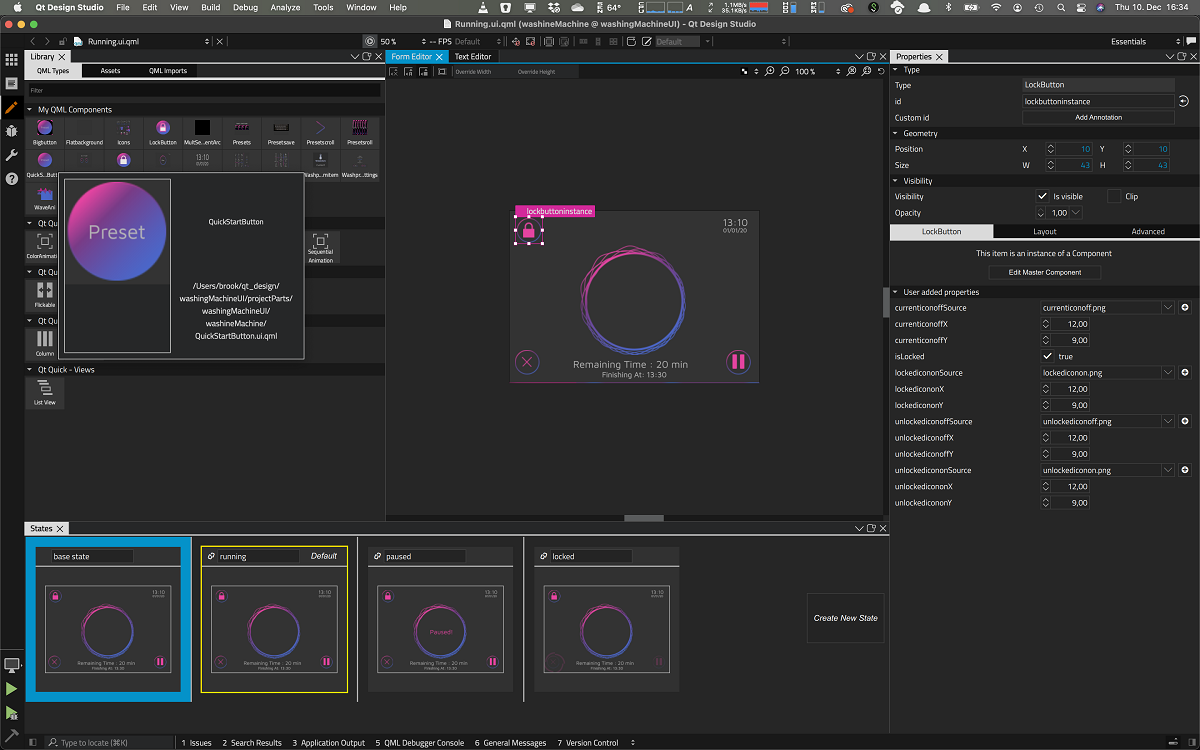
The new version of Qt Design Studio 2.0 has just been released, This release comes with some pretty big changes, including a Google Crashpad-based crash report tool (a mechanism for capturing, storing, and transmitting post-mortem crash reports from an application to an upstream collection server).
By default, Crashpad does not load generated crash reports as it captures arbitrary content from failed Qt Design Studio process memory. Therefore, the dump could contain sensitive information such as project names.
For whom it is unaware of Qt Design Studio, they should know what it is an environment for the design of user interfaces and development of graphical applications based on Qt. Qt Design Studio makes it easy for designers and developers to work together to create functional prototypes of complex and scalable interfaces.
Designers can focus solely on graphic design, While developers can focus on developing application logic using auto-generated QML code for designs, using the workflow offered in Qt Design Studio, you can convert designs prepared in Photoshop or other graphic editors into working prototypes suitable for launch on real devices in minutes.
Main novelties of Qt Design Studio 2.0
One of the main novelties that stands out in this new version of Qt Design Studio 2.0 is the experimental support for Qt 6 (version that was released a few days ago, if you want to know more about it you can consult the publication we made In the following link), since this version includes an abstracted graphical API that does not depend on the 3D API of the operating system.
Another change that is presented in this new version is the bug reporting tool that was already mentioned at the beginning. The package includes a plug-in for collecting telemetry, identical to the one provided in Qt Creator.
The plugin is based on the KUserFeedback framework developed by the KDE project. Through the configuration, the user can control what type of data is transmitted to the external server and select the level of detail of the telemetry. By default, telemetry collection is disabled, but if they wish, users can participate in the anonymous collection of information about the use of the product to further improve its quality.
We track the frequency and time of use of particular functions within the application. By providing us with this data, users help us to improve future versions of Qt Design Studio. We better understand how our users use the product and how important a particular feature is.
Of the other changes that stand out in this new version:
- Added support for generating thumbnails, with the help of which, for example, you can create suggestions and preview icons that repeat interface elements.
- Experimental support for Qt Bridge has been implemented to import designs from Figma.
- Added the ability to create projects for the Qt for MCU framework, allowing you to create applications for microcontrollers and low-power devices.
- The interface for creating 2D effects has been changed.
Finally, if you want to know more about it of this new version, as well as the software, you can check the details In the following link.
Get Design Studio 2.0
For those who are interested, please know that the commercial version and the community edition of QtDesignStudio. The commercial version is supplied free of charge and allows distribution of the prepared interface components only to holders of a commercial license for Qt. Community Edition does not impose usage restrictions, but does not include modules for importing graphics from Photoshop and Sketch.
The application is a specialized version of the Qt Creator environment, built from a common repository. Most of the Qt Design Studio specific changes go to the main Qt Creator code base. Photoshop and Sketch integrations are proprietary.